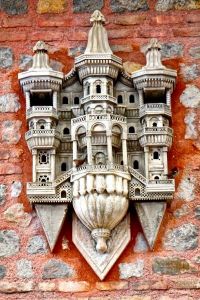The Ottoman Bird Palaces
The Ottoman Bird Palaces
Building birdhouses on top of buildings has been a tradition since ancient times. This not only provided comfort for the birds but also prevented them from entering the buildings and contaminating them. Although birdhouses existed in Istanbul before the Ottomans, in the 15th century, birdhouses became an art. In the 20th century, birdhouses became an art form. Birdhouses are now being built in a much more ornate and finely detailed way. That's how the Bird Palaces came about. When Bird Palaces were built with designs that differed greatly from the architecture of the structure on which they were built, care was also taken to position them so that they would not be affected by rain and wind. Bird palaces were made of wood, marble or stone. These buildings, which literally resembled a real palace with balconies, doors, roofs, and even towers, were also called the Bird House, the Sparrow Palace, and the Pigeon House.
Although very few Bird Palaces remain today, you can still see a few, especially in Istanbul. Bird Palaces are more common in districts with many historical buildings, such as Fatih and Üsküdar. The Madrassa of Syed Hasan Pasha, the Laleli Mosque, the Uncle Hussain Pasha Gallery, the National Library, the School of Suleiman Khalifa Sibyan, the Shah Sultan Mosque, the III. Mustafa's Mausoleum is one of the buildings you can see in the Fatih district of Istanbul. The New Governor Mosque, the Ayazma Mosque, and the Great Selimiye Mosque are the buildings where the Bird Palaces are still intact in Üsküdar.

Değerlendirmeler